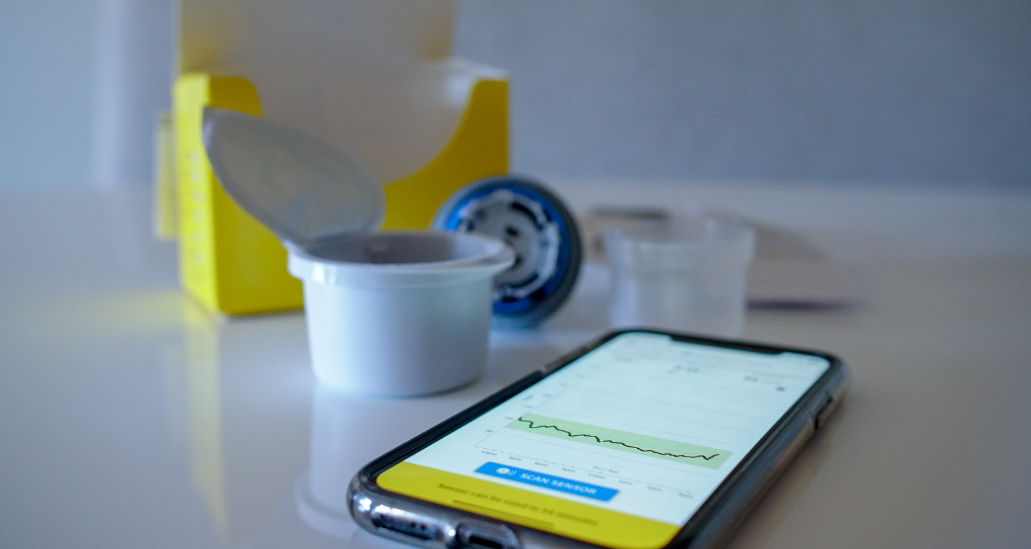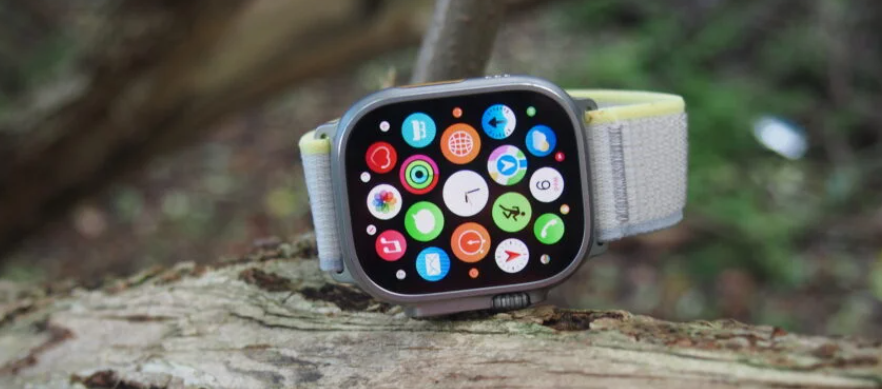Effective Type 2 Diabetes Management: Medications, Lifestyle, and Monitoring
By Type2 Advice
Managing Type 2 Diabetes: A Comprehensive Guide to Medications, Lifestyle Changes, and Monitoring
In this comprehensive guide, we’ll share expert advice and actionable tips to help you manage your type 2 diabetes, reduce your risk of complications, and maintain a healthy lifestyle. More than 37 million Americans have type 2 diabetes, which means that their blood sugar levels are too high¹. High blood sugar can damage your organs and increase your risk of serious health problems, such as heart disease, vision loss, and kidney disease². Let’s explore some of the most important aspects of diabetes management: medications, lifestyle changes, and monitoring.
Understanding Type 2 Diabetes: Causes and Symptoms
Before diving into the details of diabetes management, let’s review what type 2 diabetes is and what causes it. Type 2 diabetes is a condition that occurs due to a problem in the way the body regulates and uses sugar (also called glucose) as fuel. Sugar is a primary source of energy for the cells that make up muscles and other tissues.
When you consume food containing sugar or carbohydrates (such as bread, pasta, rice, fruits, etc.), your body breaks it down into glucose and releases it into your bloodstream. This triggers your pancreas (a gland behind your stomach) to produce insulin, a hormone that acts like a key to let glucose enter your cells. As glucose enters your cells, the amount of glucose in your bloodstream drops, leading to the pancreas releasing less insulin.
However, with type 2 diabetes, two things go wrong:
- Your cells become resistant to insulin, meaning they don’t respond well to insulin and don’t take in enough glucose.
- Your pancreas can’t produce enough insulin to keep up with the demand, resulting in insufficient insulin to unlock all the cells and let glucose in.
These factors cause glucose to build up in your bloodstream, leading to high blood sugar levels¹, which can cause various symptoms and complications over time.
The primary causes of type 2 diabetes are being overweight and inactive¹. These factors make your cells more resistant to insulin and put more pressure on your pancreas to produce more insulin. Other factors that can increase your risk of developing type 2 diabetes include:
- Family history of diabetes
- Age (the risk increases as you get older)
- Ethnicity (some groups are more prone to diabetes than others)
- History of gestational diabetes (diabetes during pregnancy)
- Polycystic ovary syndrome (a hormonal disorder that affects women)
- Certain medications (such as steroids or antipsychotics)
A simple blood test that measures your blood sugar level can diagnose type 2 diabetes. If you have any symptoms or risk factors for type 2 diabetes, you should see your doctor and get tested as soon as possible.

Figure 1: Blood-sugar monitor
Effective Medications for Type 2 Diabetes Management
One of the main ways to manage type 2 diabetes is by taking medications that help lower your blood sugar levels. Various types of medications are available for type 2 diabetes, working in different ways:
- Some stimulate your pancreas to produce more insulin (such as sulfonylureas or meglitinides)
- Some reduce the amount of glucose released by your liver (such as metformin or thiazolidinediones)
- Some slow down the absorption of glucose from your intestines (such as alpha-glucosidase inhibitors or acarbose)
- Some increase the amount of glucose excreted by your kidneys (such as sodium-glucose co-transporter 2 inhibitors or dapagliflozin)
- Some mimic the effects of natural hormones that lower blood sugar levels after meals (such as glucagon-like peptide-1 receptor agonists or liraglutide)
- Some block the action of enzymes that break down carbohydrates (such as amylin analogs or pramlintide)
Your doctor will prescribe the best medication for you based on your blood sugar levels, medical history, preferences, and possible side effects. You may need to take one or more medications to achieve optimal blood sugar control.
Some people with type 2 diabetes may also need to take insulin injections if their blood sugar levels are very high or if other medications are not enough. Insulin injections can be given with a syringe, a pen device, or an insulin pump. Insulin comes in different forms that vary in how quickly they start working and how long they last. Your doctor will help you choose the right type and dose of insulin for you.
It is crucial to follow your doctor’s instructions on how and when to take your medications or insulin. You should also check your blood sugar levels regularly with a glucometer (a device that measures blood sugar from a drop of blood) and record them in a logbook or an app. This will help you monitor how well your medications or insulin are working and adjust them if needed.
Some tips for taking medications or insulin for type 2 diabetes include:
- Take your medications or insulin at the same time every day
- Store your medications or insulin properly according to the label instructions
- Don’t skip or change your doses without consulting your doctor
- Don’t stop taking your medications or insulin even if you feel better
- Tell your doctor about any side effects or problems you experience with your medications or insulin
- Tell your doctor about any other medications or supplements you are taking
- Carry a medical ID card or bracelet that identifies you as having type 2 diabetes
- Always have some fast-acting sugar (such as glucose tablets, candy, juice, etc.) with you in case of low blood sugar episodes (also called hypoglycemia)
Lifestyle Changes for Type 2 Diabetes Management
Another key aspect of managing type 2 diabetes is making healthy lifestyle changes that can improve your blood sugar levels and overall health. These include:
Eating Well
Eating well means choosing foods that are nutritious, balanced, and appropriate for your blood sugar goals. A healthy diet for type 2 diabetes should include:
- Plenty of vegetables and fruits
- Whole grains (such as brown rice, oats, quinoa, etc.)
- Lean proteins (such as fish, poultry, eggs, beans, nuts, etc.)
- Healthy fats (such as olive oil, avocado, nuts, seeds, etc.)
- Low-fat dairy products (such as milk, yogurt, cheese, etc.)
- Limited amounts of added sugars (such as honey, maple syrup, candy, etc.)
- Limited amounts of refined carbohydrates (such as white bread, white rice, white pasta, etc.)
- Limited amounts of saturated fats (such as butter, cream, bacon, etc.)
- Limited amounts of salt (sodium)
Eating well also means being mindful of how much you eat and when you eat. Some tips for eating well for type 2 diabetes include:
- Eat regular meals and snacks throughout the day
- Don’t skip breakfast
- Plan ahead what you will eat and prepare healthy meals at home
- Use smaller plates and bowls to control portion sizes
- Fill half of your plate with vegetables and fruits
- Choose whole grains over refined grains
- Choose lean proteins over fatty meats
- Choose healthy fats over saturated fats
- Choose water over sugary drinks
- Limit alcohol intake
- Read nutrition labels and check the serving size, calories, carbohydrates, and other nutrients of foods and drinks you consume
- Count carbohydrates and keep track of how many grams you eat per day or per meal (ask your doctor or dietitian how many grams you need)
- Use tools such as meal planning apps, cookbooks, or support groups to learn new recipes and tips for healthy eating
- Consult a registered dietitian or certified diabetes educator for personalized advice on meal planning and nutrition

Figure 2: Blood-sugar monitor technology
Staying Active
Physical activity can help lower your blood sugar levels, increase your insulin sensitivity, and improve your overall health. Aim for at least 150 minutes of moderate-intensity aerobic exercise (such as brisk walking, swimming, dancing, etc.) per week, spread out over at least three days with no more than two consecutive days without exercise⁴. You should also include strength training exercises (such as lifting weights, resistance bands, bodyweight exercises, etc.) at least two days per week⁴.
Some tips for staying active with type 2 diabetes include:
- Choose activities you enjoy and that fit your lifestyle
- Set realistic goals and track your progress
- Warm-up and cool down before and after exercising
- Wear comfortable clothes and shoes that fit well and protect your feet
- Stay hydrated by drinking water before, during, and after exercising
- Check your blood sugar levels before, during, and after exercising to see how your body responds to activity and adjust your medications or snacks accordingly
- Carry some fast-acting sugar with you in case of low blood sugar episodes during exercise
- Listen to your body and don’t push yourself too hard
- Consult your doctor or a certified diabetes educator for personalized advice on exercise and blood sugar management
Managing Stress and Sleep
Stress and poor sleep can raise your blood sugar levels and make it harder to manage your diabetes. It’s essential to find healthy ways to cope with stress and ensure that you get enough sleep each night. Some tips for managing stress and sleep include:
- Practice relaxation techniques such as deep breathing, meditation, yoga, or progressive muscle relaxation
- Set aside time for yourself to do activities you enjoy or that help you unwind
- Connect with friends, family, or support groups to share your feelings and experiences
- Seek professional help from a therapist or counselor if you need it
- Create a regular sleep schedule and stick to it, even on weekends
- Make your bedroom a comfortable and relaxing environment (cool, dark, quiet, etc.)
- Limit screen time before bedtime and avoid stimulating activities late in the evening
- Limit caffeine and alcohol intake, especially in the hours before bedtime
- Talk to your doctor if you have persistent sleep problems or if you suspect you may have a sleep disorder (such as sleep apnea)
Monitoring and Adjusting Your Diabetes Management Plan
Regular check-ups with your healthcare team are crucial for managing your type 2 diabetes and staying healthy. During these visits, your doctor will check your blood sugar control, monitor your overall health, and adjust your diabetes management plan as needed.
Some tests and assessments you may need include:
- Hemoglobin A1C test (a blood test that measures your average blood sugar level over the past 2-3 months)
- Blood pressure and cholesterol checks
- Foot and eye exams
- Kidney function tests
- Dental exams
- Vaccinations (such as flu, pneumonia, hepatitis B, etc.)
In addition to these tests and assessments, you should also discuss any concerns, challenges, or goals you have related to your diabetes management with your healthcare team. They can provide you with the support, advice, and resources you need to take control of your diabetes and lead a healthy, fulfilling life.
Remember, managing type 2 diabetes is an ongoing process, and it requires commitment, knowledge, and support from both you and your healthcare team. By following a personalized diabetes management plan that includes medications, lifestyle changes, and monitoring, you can reduce your risk of complications and enjoy a better quality of life.
References and further reading
(1) Type 2 diabetes: Value of home blood sugar monitoring unclear. https://www.health.harvard.edu/blog/type-2-diabetes-value-home-blood-sugar-monitoring-unclear-2017072411989. (2) Monitoring Your Blood Sugar - CDC. https://www.cdc.gov/diabetes/managing/managing-blood-sugar/bloodglucosemonitoring.html. (3) Type 2 diabetes in adults - Monitoring | BMJ Best Practice. https://bestpractice.bmj.com/topics/en-gb/24/monitoring. (4) What Are the Best Devices for Type 2 Diabetes Patients on Insulin?. https://www.healthline.com/health/type-2-diabetes/best-devices-type-2. (5) Type 2 diabetes - Going for regular check-ups - NHS. https://www.nhs.uk/conditions/type-2-diabetes/going-regular-check-ups/.